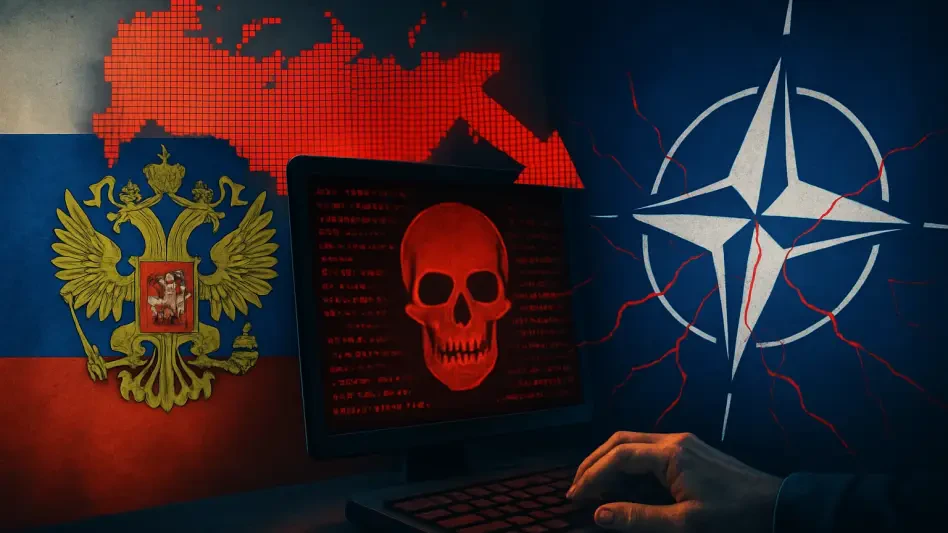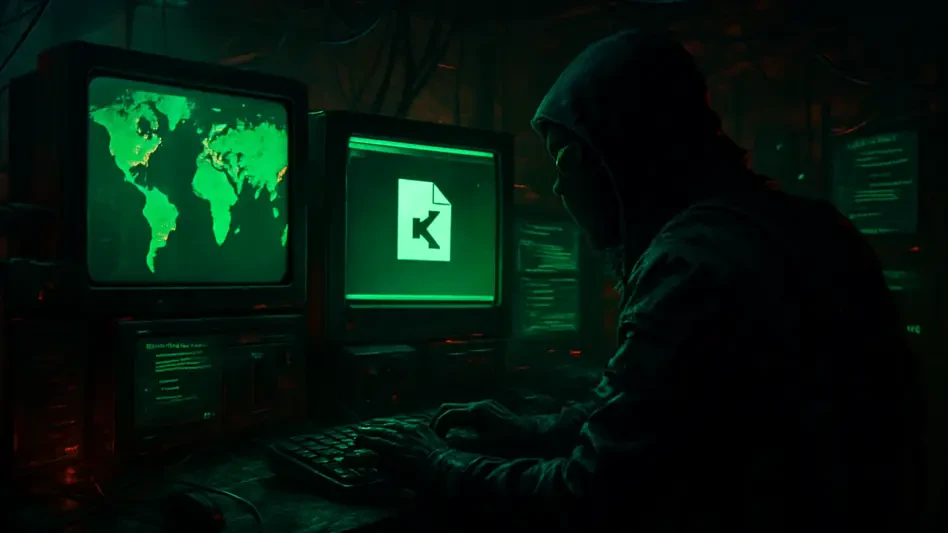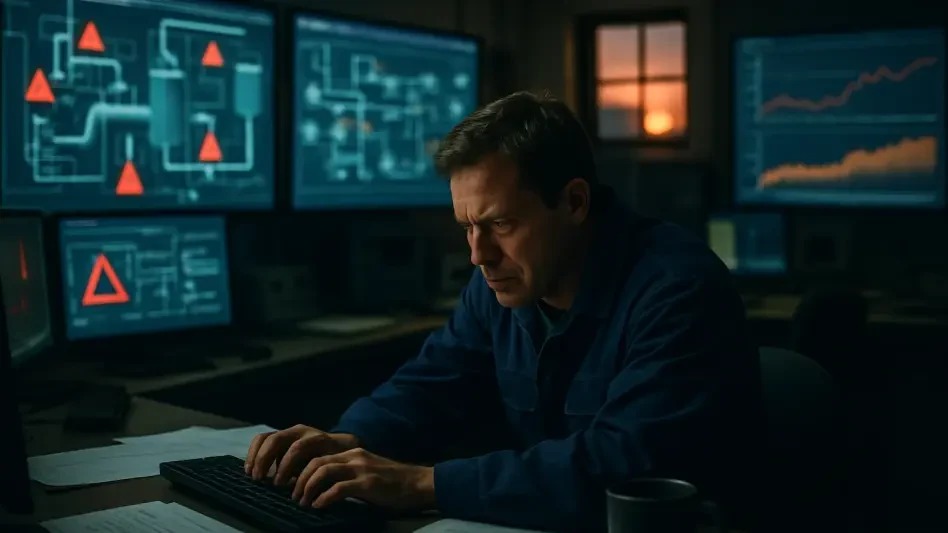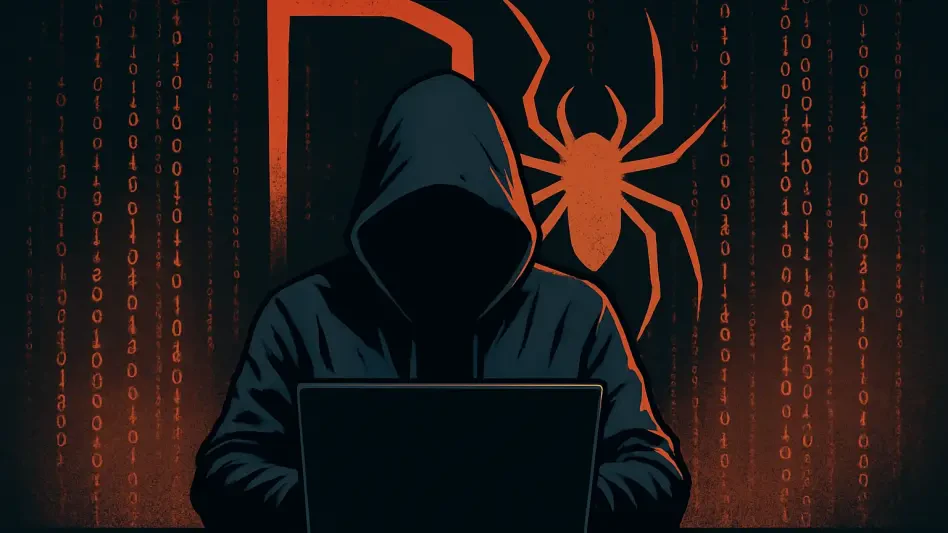The digital landscape has turned into a fierce battleground, with NATO member states confronting a staggering 25% increase in cyber-attacks linked to Russian state-sponsored actors over the past year. This sharp rise, embedded within a broader hybrid warfare strategy, targets critical sectors and poses a severe threat to geopolitical stability across Western alliances. With government institutions, academia, and infrastructure under constant attack, the urgency to tackle this growing menace has never been more apparent. This roundup compiles insights from industry reports, security analysts, and policy experts to analyze the multifaceted nature of Russian aggression, compare diverse perspectives on its implications, and explore potential defenses for NATO allies in this evolving conflict.
Unpacking the Scale of Russian Cyber Hostility
Insights from Corporate Analysis on Attack Patterns
Industry reports from leading tech firms underscore the intense focus of Russian cyber operations on NATO countries. Data reveals that nine of the top ten most targeted nations are NATO members, with the United States bearing 20% of the attacks, followed by the United Kingdom at 12%. Government sectors face a significant impact, accounting for a quarter of all incidents, while research institutions and think tanks also endure relentless digital assaults. This pattern indicates a calculated strategy to undermine strategic decision-making and intellectual resources within Western alliances.
A contrasting perspective from corporate analyses highlights the sophistication of these attacks, often involving advanced malware and phishing schemes tailored to exploit specific vulnerabilities. Unlike opportunistic cybercrime, these efforts seem meticulously planned to disrupt critical operations. The consensus among tech experts is that such precision suggests state-driven motives, raising questions about how NATO can adapt to threats that evolve faster than traditional defense mechanisms.
Security Experts Weigh in on Hybrid Warfare Tactics
Security analysts provide a wider perspective, framing the cyber surge as a key element of hybrid warfare that blurs the line between peace and conflict. Beyond digital incursions, physical provocations such as drone violations in Poland and airspace breaches over Estonia complement these attacks, creating a multi-dimensional threat. Such tactics aim to destabilize without triggering conventional military responses, placing NATO in a difficult position to define and counter aggression.
Some security professionals argue that this ambiguity is intentional, designed to exploit gaps in international law and NATO’s response protocols. Incidents like unidentified drones forcing airport closures in Denmark demonstrate how physical actions amplify the impact of cyber threats. This viewpoint emphasizes the need for a redefined defense strategy that integrates responses to both tangible and intangible forms of hostility.
Diverse Perspectives on Russia’s Strategic Objectives
Policy Analysts on State-Cybercrime Collaboration
Policy experts explore the troubling alliance between Russian state actors and cybercriminals, a partnership that extends the reach of digital warfare. Ransomware and malicious software, often deployed by criminal proxies, serve state objectives by targeting businesses and public institutions not only within NATO borders but globally. This collaboration transforms cybercrime from a mere annoyance into a geopolitical weapon with far-reaching consequences.
A differing opinion among policy circles questions the degree of state control over these criminal elements. While some argue that cybercriminals act as direct extensions of government agendas, others suggest a looser arrangement where mutual benefit drives cooperation. Regardless of the dynamic, there is agreement that this nexus complicates attribution and accountability, making it harder for NATO to devise targeted countermeasures against such hybrid threats.
Intelligence Community Views on Escalation Risks
Former intelligence officials offer a graver outlook, suggesting that the intensity of Russian cyber and physical actions may indicate a shadow war already underway. The combination of covert digital strikes with overt provocations, such as intercepting fighter jets over the Baltic Sea, signals an escalation that could reshape geopolitical norms. This perspective warns of a slippery slope toward more direct confrontations if left unchecked.
On the other hand, some intelligence analyses advocate for cautious interpretation, noting that while the threat is real, labeling it as war risks inflaming tensions unnecessarily. Instead, the focus should be on understanding Russia’s intent to test NATO’s resolve without crossing into open conflict. This nuanced take underscores the importance of strategic patience alongside robust preparedness to avoid missteps in an already volatile landscape.
Defensive Strategies and Recommendations from Experts
Cybersecurity Specialists on Building Resilience
Cybersecurity specialists stress the urgent need for NATO states to strengthen their digital defenses in light of the 25% attack surge. Recommendations include investing in advanced threat detection systems and fostering public-private partnerships to protect critical infrastructure. Enhancing resilience through regular system updates and employee training is seen as a fundamental step to mitigate risks posed by sophisticated state-sponsored attacks.
A complementary suggestion from this field focuses on international cooperation, urging NATO allies to share intelligence and resources to combat shared threats. Joint exercises simulating cyber warfare scenarios could help identify weaknesses before they are exploited. This collaborative approach is considered essential to staying ahead of adversaries who continuously adapt their tactics to exploit emerging technologies.
Strategic Thinkers on Policy Innovation
Strategic thinkers propose a broader policy overhaul to address the hybrid nature of Russian aggression. Beyond cybersecurity, NATO must develop frameworks to respond to physical provocations like drone incursions and airspace violations as part of a unified strategy. Crafting policies that deter without escalating into full-scale conflict is a delicate but necessary balance to maintain stability.
Another viewpoint advocates for public awareness campaigns to educate citizens about the risks of hybrid warfare, including misinformation and digital manipulation. Empowering populations to recognize and resist such tactics could reduce the societal impact of Russia’s multi-layered assaults. This long-term approach aims to build a societal shield alongside technological and military defenses, creating a more comprehensive barrier against aggression.
Reflecting on Key Takeaways and Next Steps
Looking back, the roundup of opinions revealed a unified concern over the 25% rise in Russian cyber-attacks on NATO states, coupled with physical provocations that define a complex hybrid warfare landscape. Insights from corporate reports, security analysts, policy experts, and intelligence perspectives painted a picture of a deliberate strategy to destabilize Western alliances. The collaboration between state and criminal cyber elements further compounded the challenge, demanding innovative responses.
Moving forward, NATO allies should prioritize the development of integrated defense mechanisms that address both digital and tangible threats. Establishing rapid-response cyber units and enhancing cross-border intelligence sharing stand out as actionable steps to counter Russia’s evolving tactics. Additionally, exploring diplomatic channels to set boundaries for acceptable state behavior in cyberspace could prevent further escalation, paving the way for a more secure global environment.








